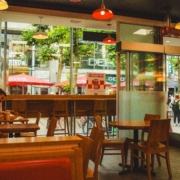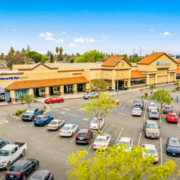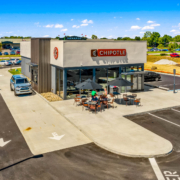Trends in Casual Dining That Impact Real Estate Value
The casual dining sector is evolving rapidly due to changing consumer preferences and technological advancements. These shifts are going to start having an impact on property values, making it essential for commercial real estate investors to understand how these trends influence investment potential. By aligning investments with the current trends shaping the casual dining landscape, investors can ensure long-term value growth and portfolio resilience.
- Enhanced Customer Experiences and Property Value
Today’s diners seek more than just good food—they want memorable, immersive experiences. In response, casual dining establishments are investing in ambiance, expanding outdoor seating, and incorporating entertainment features. Properties that can accommodate these elements can help to increase the value, as they allow tenants to cater to the demand for experiential dining. For investors, choosing adaptable spaces that enhance customer experience can attract tenants who are willing to pay higher rents and sign longer leases. This ultimately boosts the property’s income potential and enhances overall asset value.
- Digital Integration as a Value Driver
The adoption of digital solutions such as online ordering, delivery, and contactless payments has become a standard in casual dining. Properties with robust digital infrastructure—like high-speed internet and dedicated pickup areas—are increasingly appealing to tenants who want to stay competitive in the digital age. Doug Roland, investment advisor at Sands Investment Group, notes that with the rise of platforms like Uber Eats and DoorDash, operators have been able to “utilize smaller square footage, less parking, and reduce labor costs. This setup makes for more stable tenants which ultimately reduces investor risk.” Working with SIG investment advisors allows investors to have access to key insights into which tenants and operators are taking advantage of technological advancements and which are not.
- Sustainability Enhances Appeal and Long-Term Value
Environmental consciousness is rising among both consumers and businesses. Casual dining establishments are thus seeking eco-friendly, energy-efficient properties. Buildings that offer sustainable features often command higher values because they align with tenants’ goals of reducing environmental impact and operational costs. Sustainable properties attract tenants willing to pay a premium for green features such as solar panels, gray water recycling, and LED lighting, which in turn strengthens tenant retention and supports long-term value growth. Investors who focus on sustainability not only meet current market demands but also mitigate potential risks associated with future environmental regulations, adding to their properties’ resilience.
- Multi-Use Spaces Increase Versatility and Value
Casual dining establishments are increasingly interested in spaces that can serve multiple purposes beyond dining, such as hosting events or providing co-working areas. Multi-use properties that offer this flexibility tend to have higher market values as they can cater to diverse tenant needs and adapt to shifting demands. For investors, this versatility translates into greater revenue potential, as such properties can attract a broader range of tenants looking for spaces that maximize both utility and adaptability.
- Prime Location and Accessibility as Core Value Indicators
Despite the rise of delivery services, location remains critical for casual dining success. Doug Roland emphasizes that “geography is very important, as properties in high-traffic areas with easy access to parking and public transit continue to attract a steady flow of customers”. For investors, focusing on properties in strategic locations helps maintain strong rental rates and consistent tenant demand. By choosing locations with prime accessibility, investors increase their chances for not only stable income but also long-term property appreciation.
- Menu Innovation and Its Influence on Property Value
Menu innovation is another trend influencing casual dining real estate. Diners today are more adventurous, favoring unique, high-quality, and often health-conscious options. Restaurants focused on menu innovation often require adaptable kitchen spaces that can accommodate evolving culinary trends and specialized equipment. Properties with flexible layouts or potential for kitchen expansion appeal to tenants who prioritize menu creativity as a way to differentiate themselves. Investors who recognize this trend can select properties that cater to forward-thinking tenants, enhancing both rental income and property value.
How SIG’s Investment Advisors Provide Value to Investors
Our investment advisors bring valuable insights to investors in casual dining real estate by aligning investment strategies with key market trends. Through expert analysis, we identify properties that are adaptable, digitally integrated, and sustainability-focused, ensuring these assets meet current tenant demands and support long-term growth. By leveraging their deep knowledge of prime locations and multi-use property potential, our investment advisors help investors make informed decisions that optimize property value, attract quality tenants, and enhance portfolio resilience. This strategic guidance positions investors to navigate a dynamic market effectively and secure sustainable returns.
Contact our restaurant team today to learn more about our services and how we can help you achieve your financial goals.
















